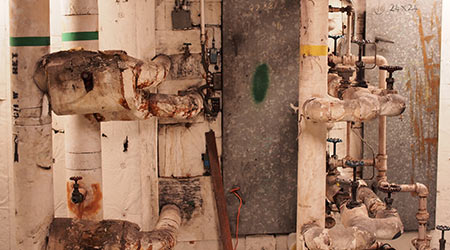
Keep Your Building Cool in Summer with a Cool Roof
August 17, 2017
As we experience the dog days of summer, building owners and managers are likely considering ways to keep their cooling costs down. This can be a particularly critical issue for anyone planning to construct a new building or planning to replace or restore an existing roof. That’s where a cool roof comes in.
A cool roof is a process by which many common roofing surfaces are made “cool” by applying coatings, which are either white or contain special reflective pigments that reflect sunlight. Cool roofs protect the roof surface from ultra-violet (UV) rays and chemical damage that can cause premature aging and drying. Additionally, cool roofs absorb less heat and keep the entire building cooler and at a more consistent temperature, thereby reducing energy usage and the corresponding expense.
According to St. Louis-based Bade Roofing Company, a standard or dark roof can reach temperatures of up to 150 degrees, but a cool roof, under the same conditions, could be more than 50 degrees cooler.
“Cool roofs help keep extra heat out of a building during the summer without losing heat during the winter,” says Dave Bade, CEO of Bade Roofing Company. “This means lower energy costs as you don’t need as much air conditioning. They’re also better for the environment.”
Below, Bade Roofing shares some examples of common roofing types and how they can be made cool:
- Built-up Roofs: Built-up roofs are the old standard tar-and-gravel combination that is typically black or dark gray. To make this roof cool, you can replace the surface layer with a UV-resistant white mineral fiberglass surface or coating.
- Roof Coatings: Roof coatings are constructed by mixing two liquid chemicals together that react and expand to form one solid piece that adheres to the roof. A reflective, protective coating can be applied to this type of roof that offers cool-roof performance.
- Metal Roofs: Metal roofs can be made cool simply by painting the surface with a reflective paint or coating.
- Modified Bitumen: Modified bitumen contains one or more layers of a plastic or rubber material with reinforcing materials and topped with a surfacing material. This roof type can be made cool by adding a cool-roof coating to achieve a high solar reflectance.
- Shingles, Slate, or Tile: These roofing products are used for steeper-sloped commercial buildings. For cool asphalt shingles, you’ll need to use specially coated granules that provide better solar reflectance. Slate and tile products are available with solar-reflective surfaces in a variety of colors.
- Single-ply: Single-ply roofing is a pre-fabricated sheet that is rolled onto the roof in a single layer and attached with mechanical fasteners, adhered with chemical adhesives, or held in place with gravel, stones or pavers. To make this roof type cool, single-ply roofing products can be ordered with ultra-violet-resistant and highly reflective surfaces.
This Quick Read was submitted by Bade Roofing Company, Inc. www.baderoofing.com. Read more about the benefits of cool roofs and cool roof rebates.
Next
Read next on FacilitiesNet












